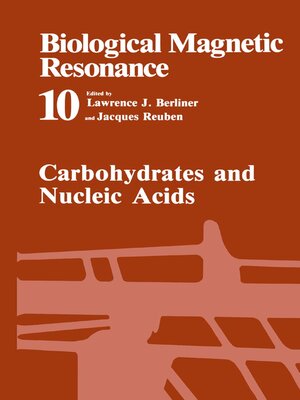
Sign up to save your library
With an OverDrive account, you can save your favorite libraries for at-a-glance information about availability. Find out more about OverDrive accounts.
Find this title in Libby, the library reading app by OverDrive.



Search for a digital library with this title
Title found at these libraries:
| Library Name | Distance |
|---|---|
| Loading... |
In the past ten years or so, biological magnetic resonance (NMR and ESR) has fully blossomed and become highly branched. In the 1970s and earlier, a practitioner in biological magnetic resonance was using virtually all of the available methods suitable for his research, with the latter covering a diverse range of systems. Today, the focus of an individual laboratory is actually much narrower, with respect to both the methods and the systems investigated. Thus, those who investigate protein structure by multi dimensional NMR spectroscopy do not usually engage in studies involving in vivo spectroscopy. The conferences on biological magnetic resonance now have parallel sessions rather than the single, common session of earlier days. Moreover, topical meetings are becoming more frequent. Therefore, this and future volumes of our series will also focus on specific topical areas. We are proud to present Volume 10 of our series. It focuses on Carbohydrates and Nucleic Acids. In an extensive chapter, Kamerling and Vliegenthart use oligosaccharide-alditols released from mucin-type- glycoproteins to illustrate the power of proton NMR spectroscopy in the determination of carbohydrate structure. Wemmer gives a detailed coverage of the arsenal of modern NMR methods now available for structural studies of nucleic acids. Forthcoming volumes will focus on In Vivo Spectroscopy and Protein Structure. As always, we are anxious to get feedback from the readers and hear their comments and suggestions. Lawrence J.







